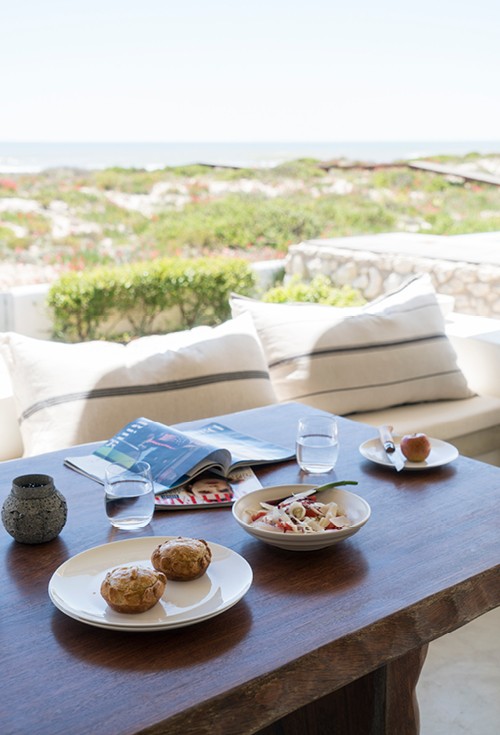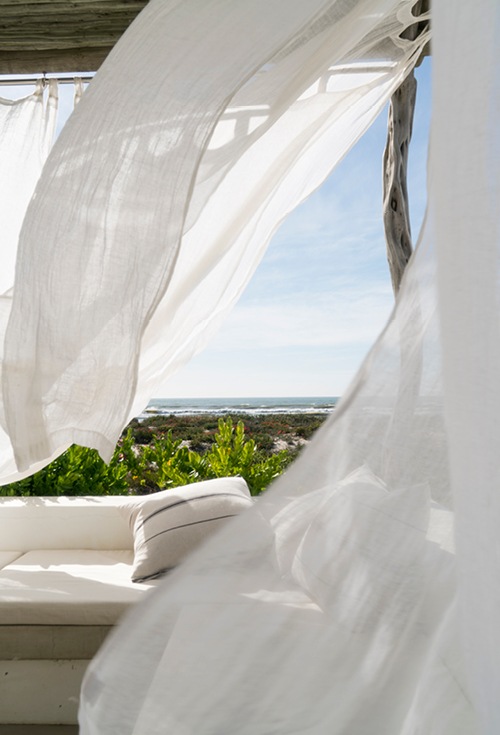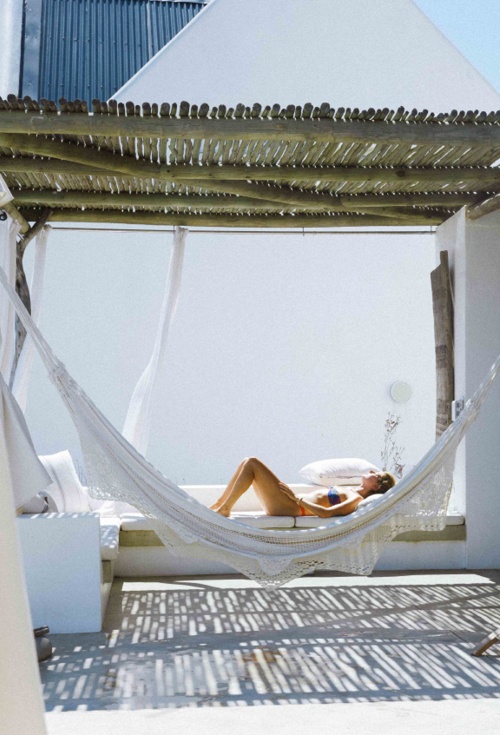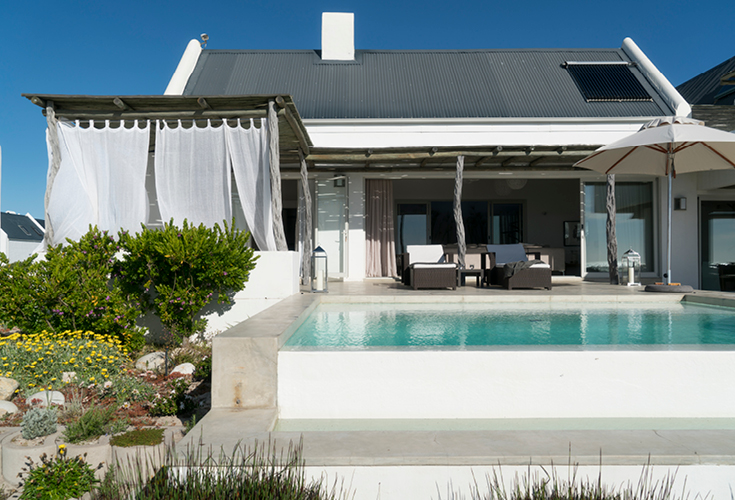On South Africa’s West Coast, a stretch of coastline whispered more than spoken about, stillness is not just a moment — it’s a mood. And at Casa Blu in Dwarskersbos, it becomes a setting for both solitude and sublime design.
The West Coast is not for show. It doesn’t parade itself. It doesn’t shout. Instead, it arrives quietly — a landscape of washed-out blues and weathered whites, wild grasses brushing against coastal air, and a horizon that hums with space. It’s where the dunes don’t divide land and sea, but dissolve one into the other. And tucked among them, down a winding sandy path, is a home that seems less built than placed, Casa Blu.



We arrived on a Friday afternoon. The sea was unusually still, like a held breath. A mirror stretched across the Atlantic. On a coast known for its howling winds and restless surf, this felt like a private performance – the ocean silenced for just a moment, offering us a rare, serene stage.
The house reveals itself immediately. As the front door opens, the view rushes towards you. It’s quite something. Expansive. You are met by a rectangular strip of kitchen-dining-lounge on the inside, and beyond, stepping through the open doors, to covered dining, pool, and outdoor lounge.
A weathered wooden gate marks the transition from sanctuary to sea. A narrow footpath meanders through the dune scrub, framed by tufts of kersbos and carpeted in fine earth. Looking back from the shore, Casa Blu rises, white against white, blending into its surroundings with a humility that feels deeply intentional.
From Path to Plunge
Reflecting back, what strikes you first is not the house itself, but how it frames the environment. Every door, every shuttered window, and the linen-draped outdoor lounge is a connection to the outside. The scent of salt filters through the gauzy curtains that billow in the breeze, lifting and falling like slow breaths. The stillness is textured, layered with the softness of fabric, the coolness of concrete underfoot, and the faint rustle of dune grass beyond.
The plunge pool is the first invitation to pause. Not for laps or play, but for something quieter: a float, a moment of weightlessness, eyes level with the dune line. It sits tucked between the beach gate and the house — a kind of intermediary, a liquid comma in the story of sea and structure.
Inside, the design is both considered and effortless. Think Cape vernacular softened with Mediterranean ease. The interiors speak softly — whitewashed walls, marine palettes, handmade ceramics, and books whose pages lift slightly in the breeze.
This isn’t luxury in the traditional sense. It’s sophisticated and smart in allowing the surroundings to take the lead role. There are no glinting chandeliers, no automated blinds. It’s subtler than that. While it has a smart TV, wireless SONOS, your focus lies rather with a beach walk or the solar-heated swimming pool, and if you love the water, a number of canoes, some surfboards and a boogie board. Here, luxury is the ability to wake with the light, to move barefoot from bedroom to stoep, and to reach the shoreline in slow strides.
A Room for the Ocean
Nearly all rooms look to the sea. On the upper level, the balcony terrace was windless, at least on a weekend like ours, and it became a perch from which to trace the silent migration of the tide, or the occasional dolphin fin that arcs just once before vanishing again. Morning coffee here tastes different: part ritual, part reverence.

And while the house sleeps eight with ease – three generous bedrooms and three-and-a-half bathrooms – the true abundance here is space. Not the square footage, but the visual and sensory space that stretches from the foot of the dunes to the fold of the ocean.
Dwarskersbos: Where Time Bends
To say Dwarskersbos is sleepy is to miss its deeper charm. It’s not sleepy; it’s suspended. A fishing village with no pretence, no curated cafés, no sundowner scene. Just a coastline dotted with local fishermen, distant gulls, and the kind of long, uninterrupted beaches that make you forget your phone upstairs. This is the charm of this coastline, Capetonians would agree. The charm here isn’t performative – it’s personal. And entirely unfiltered.
Design That Doesn’t Demand
What lingers most, after a weekend at Casa Blu, is not what you did, but how you felt. The home doesn’t demand to be noticed, but rather appreciated. It lets you notice yourself: how little you speak, how often you stare, how many times you forget what time it is.
Design, here, isn’t decoration. It’s deference. To the ocean. To the wind. To the rhythm of weather. And somehow, by stripping away everything unnecessary, it gives you more texture, more connection, more pause.
When the Atlantic Sleeps
On Sunday, just before we left, we stood at the gate again. The same one we entered through, now half-buried in soft sand. The ocean still hadn’t stirred. It remained glassy, unfathomable. The wind, absent. The curtains, still lifting, like sails without purpose.
In some months, Cape Town is known to be windy. It’s a wonderful thing to find stillness, rarer still to find it reflected in design, in a house that understands the value of restraint, the dignity of understatement.
At Casa Blu, dune meets design, and the result is not a home on the beach, but a home within it.
Click here to make contact with our team and find out more.


